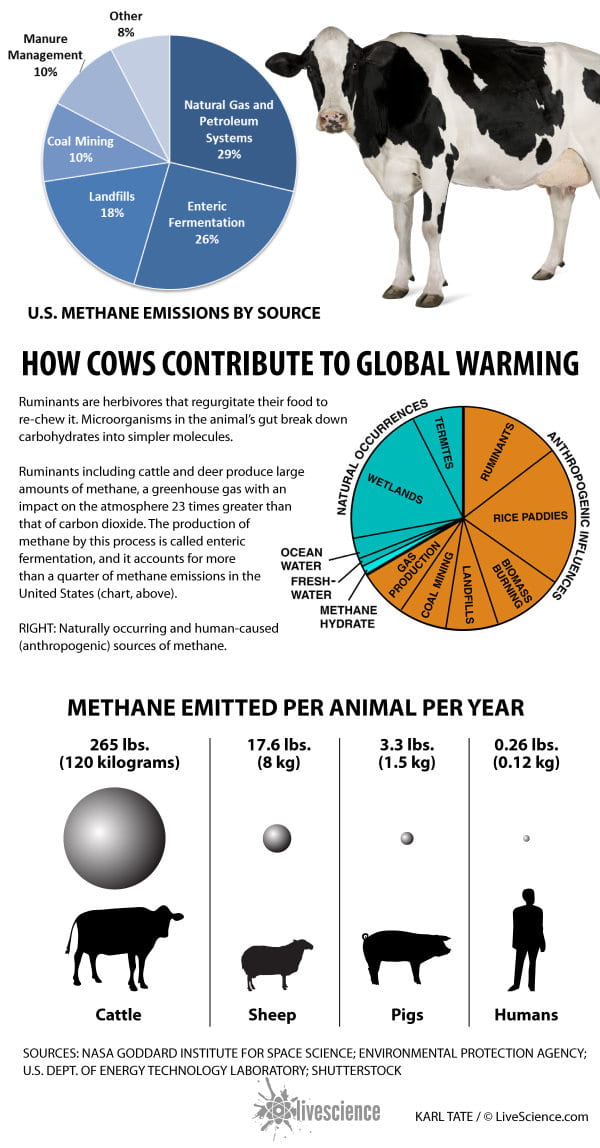What’s happening, trusty readers? Not so good? You-oh. Oh, jeez. That sounds terrible.
Just kidding. Today we’re gonna dive deep into a cloud of methane and science. That’s right. We’re talking ‘bout the matter cycles.
So, to start off our unit, we looked at a trusty Crash Course video. As always, the link should be right under this sentence.
After that, we got grouped up and picked our cycles for our project. The Great Amelia B. and I chose the carbon cycle for our project. Oh, the project! Right. Our project for this unit was to identify a negative impact on your cycle and create something (organism, system) that helped reduce that effect.
We of course identified global warming as the negative effect on our cycle, and we quickly found methane to be a huge part of the problem. Methane traps 25 times more heat in the atmosphere than carbon, and is abundant in our atmosphere, so reducing that would be a huge benefit to our planet.
Throughout this unit, we’ve learned about food chains, trophic levels, and levels of consumers. We also took place in a debate over which cycle is “best”. (Spoiler Alert, we didn’t win)
Time flew by, and within a while, we had already made a KeyNote presentation to present our solution, which involves taking methane from a barn, chilling and liquefying it, and reacting it with a zeolite to turn it into methanol, an environmentally safe-er fuel. Full presentation down below.
[Insert Video Here]
Also, as is the case with all of my science projects, I made a mind map. No explanation needed.
Now, despite what you may think, this post is not to explain my unit and project. No, no, no. It’s for presenting the big c’s. Curricular Competencies. Yeah. I’ve done plenty of science posts before, so I’ll cut right to the chase.
Use Knowledge of Scientific Concepts to Draw Conclusions that are Consistent with Evidence
Long title aside, this competency had to do with my knowledge of ever-changing environmental variables, and how all cycles are interconnected. I think we demonstrated our understanding very well, as we had slides explaining the effects and consequences on all cycles, and accounted for all variables, such as rising sea levels, and raising temperatures.
We used examples from nitrogen-lacking carbon sinks and rising ocean levels to display our learning and everything we learned about the cycles, not just our own, but also the nitrogen, water, and phosphorus cycles.
Evaluate the Validity and Limitations of a Model or Analogy in Relation to the Phenomenon Modelled
I think this competency was something we unknowingly did pretty well at. Throughout the entire project, we constantly questioned ourselves with “Is this realistic?” and “What other problems could this bring?”. With some advice from our teacher, we investigated every possible aspect of our project. Cost, comparison to other carbon-saving machines, timing, exact measurements and calculations, as well as the exact number of cows needed for an effective 14-day system.
Formulate Multiple Hypotheses and Predict Multiple Outcomes
Throughout our project, we’ve always looked at alternate methods and failsafes in case something does terribly wrong. We’ve looked at multiple outcomes, multiple new innovations and tried to use average numbers for our calculations because, of course, nothing ever stays the same. Maybe one day, the cows have an off day. Maybe another day, the cows are like gas machines. All these variables must be accounted for, and we’ve done our best to make these visible and important in our project.
Throughout this project, I’ve learned and refreshed a lot of information on food chains, trophies levels, and consumers (not people who buy a lot of merchandise, things that eat other things). However, the key pieces I learned in elementary school were still here and better than ever. This unit was a refreshment from the horrors of like terms and polynomials (jk) and was a huge help in my scientific studies.
This is Jason, signing off.

